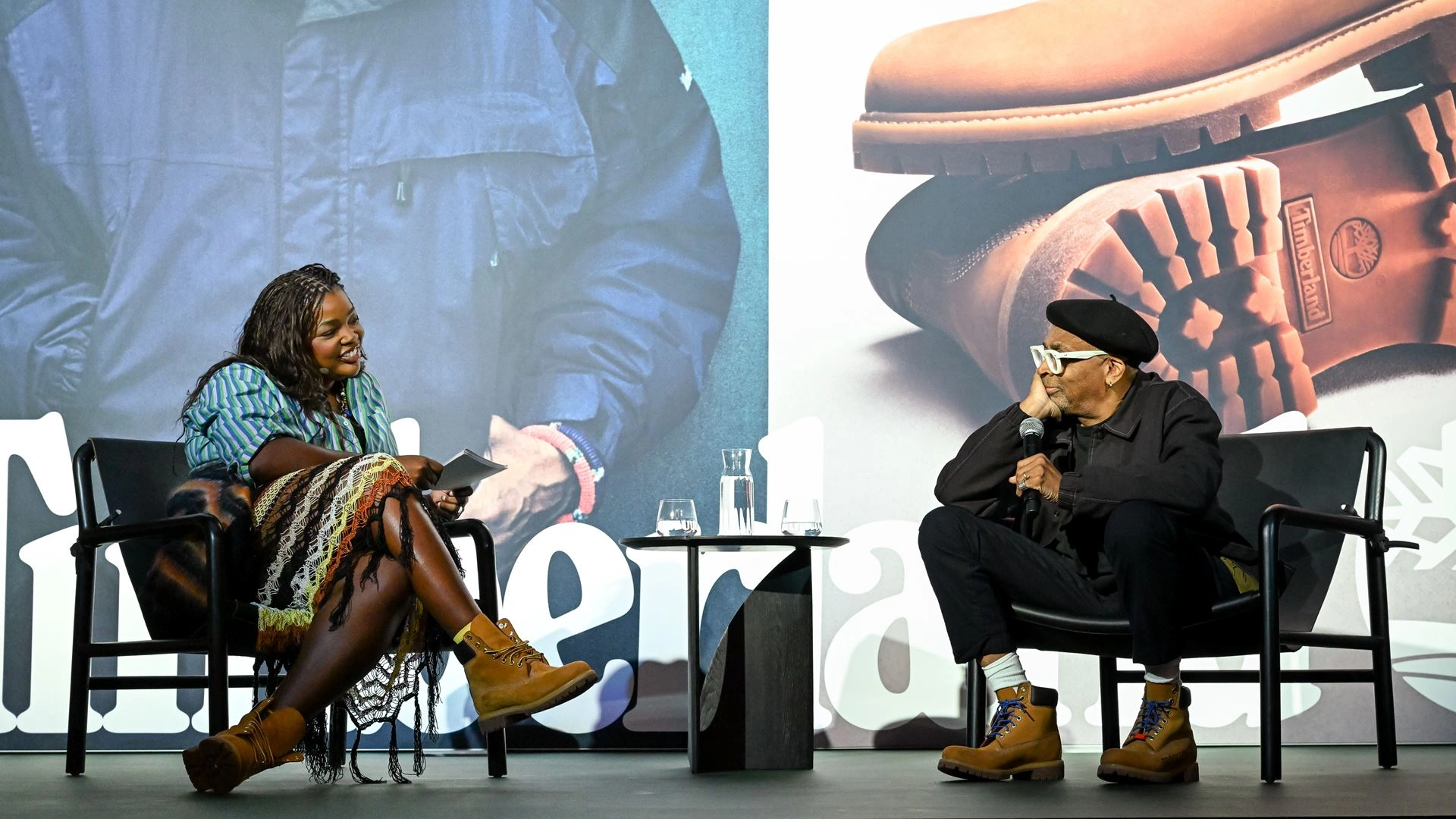Steve Jobs, the late co-founder of Apple Inc., was more than just a technology innovator—he was a symbol of simplicity, precision, and purpose. This ethos extended beyond his groundbreaking products to his personal style, which became an unmistakable signature: New Balance 992 sneakers, blue Levi’s 501 jeans, and a black Issey Miyake turtleneck. Far from being an accidental choice or a matter of convenience, Jobs’ wardrobe reflected a deliberate alignment with his ideals, values, and identity.
Jobs’ uniform dressing went beyond fashion; it became a cadence—a rhythm that underscored his approach to life and work. It was not just clothing; it was a testament to the power of simplicity and individuality, and its enduring meaning continues to resonate with creatives, innovators, and minimalists today.
Uniform Dressing: Beyond Conformity
Uniform dressing often conjures images of conformity, where individuals blend into a group identity by adhering to prescribed attire. In schools, workplaces, and the military, uniforms signify cohesion and shared purpose. However, Jobs subverted this notion by turning the uniform into a personal statement, a unique and highly curated representation of his values and aesthetic.
Unlike a uniform that enforces sameness, Jobs’ wardrobe stood as a reflection of his personal brand. Every element was specific, deliberate, and imbued with meaning. The choice of Levi’s 501 jeans, for example, wasn’t random—it symbolized classic American design, durability, and simplicity. Similarly, his New Balance 992 sneakers were practical, comfortable, and understated, aligning with his focus on functionality over flashiness. Finally, the black Issey Miyake turtlenecks, custom-made to his specifications, embodied an avant-garde yet minimalist aesthetic, a nod to the intersection of art and innovation.
By repeating this combination, Jobs communicated consistency and clarity, two values he cherished both personally and professionally.
Cadence in Uniform Dressing
Jobs’ uniform dressing had a cadence—a predictable rhythm that echoed his approach to life and work. This cadence offered several key benefits that not only streamlined his daily routine but also underscored the broader philosophy he championed:
1.Elimination of Decision Fatigue
One of the most cited reasons behind Jobs’ uniform was his desire to reduce decision fatigue. By wearing the same outfit every day, Jobs freed up his mental energy for more important decisions. This practice is echoed by other highly successful individuals, such as Barack Obama and Mark Zuckerberg, who have similarly pared down their wardrobes to focus on their work.
2.Consistency and Branding
Jobs’ uniform wasn’t just practical—it became an integral part of his personal brand. When people saw a black turtleneck and blue jeans, they thought of Steve Jobs. This visual consistency reinforced his image as a visionary leader who valued clarity and purpose.
3.Simplicity as Elegance
Jobs was a firm believer in the idea that simplicity is the ultimate sophistication, a mantra that guided Apple’s product design. His wardrobe mirrored this principle, demonstrating that style and sophistication don’t require complexity.
4.Timelessness
Unlike fast fashion, Jobs’ uniform transcended trends. His outfit choices—iconic staples like Levi’s jeans and minimalist sneakers—remain timeless, much like the enduring appeal of Apple products.
A Uniform Built on Unique Codes
What set Jobs’ uniform apart was its specificity. It wasn’t just any black turtleneck, jeans, or sneakers; each piece carried a unique story, carefully curated to reflect his tastes and values. This specificity is what differentiates personal style from mere conformity.
The Black Turtleneck
Jobs’ black turtlenecks were custom-made by Japanese designer Issey Miyake, known for his innovative approach to fashion. According to Jobs, he initially approached Miyake about designing a uniform for Apple employees, inspired by Sony’s corporate culture. While that idea didn’t materialize, Miyake created a set of turtlenecks for Jobs himself.
The turtleneck became synonymous with Jobs, symbolizing not only his personal style but also his deep appreciation for craftsmanship, innovation, and minimalism.
Levi’s 501 Jeans
Jobs’ Levi’s jeans were a nod to classic American design—functional, durable, and accessible. Levi’s 501s, with their straight-leg silhouette and rugged construction, embodied the democratic values that resonated with Jobs’ vision for technology: products that were accessible and useful to everyone.
New Balance 992 Sneakers
The New Balance 992 sneakers were a practical choice for Jobs, offering comfort and support during long days of work and presentations. Their understated design aligned with Jobs’ preference for functional, no-frills aesthetics.
Each element of Jobs’ uniform reflected his unique values and priorities, creating a cohesive code that defined his personal style.
Humble Yet Revolutionary: The Meaning of Jobs’ Uniform
Jobs’ uniform wasn’t ostentatious or attention-seeking—it was humble, understated, and functional. Yet, its impact was revolutionary, challenging conventional ideas of what it means to be stylish. His wardrobe demonstrated that personal style doesn’t require variety or complexity; instead, it thrives on authenticity, intention, and self-expression.
Simplicity as Empowerment
By simplifying his wardrobe, Jobs empowered himself to focus on what mattered most: creating groundbreaking products. This simplicity extended beyond his wardrobe to his work, where he sought to strip away unnecessary complexity to reveal the essence of great design.
A Model for Creativity
Jobs’ uniform also served as a model for creative individuals seeking clarity and focus. By eliminating the noise of daily decision-making, Jobs created space for creative thinking, problem-solving, and innovation.
A Testament to Individuality
Perhaps the most profound meaning behind Jobs’ uniform is its testament to individuality. In an industry obsessed with trends and competition, Jobs remained true to his own vision, both in his work and his wardrobe. His uniform was a reminder that style is not about fitting in but about standing out authentically.
The Enduring Legacy of Steve Jobs’ Uniform
Today, Steve Jobs’ uniform continues to inspire. His minimalist approach to style has been adopted by countless creatives, entrepreneurs, and professionals seeking to simplify their lives and focus on their passions.
Jobs’ wardrobe also serves as a case study in the power of intentionality. Every element of his uniform was carefully chosen, reflecting his values and aesthetic sensibilities. This intentionality extended to all aspects of his life and work, from the design of Apple products to the way he presented himself to the world.
In an era defined by fast fashion and fleeting trends, Jobs’ uniform stands as a timeless reminder of the power of simplicity, authenticity, and personal expression.
Impression
The cadence of Steve Jobs’ uniform was more than just a daily rhythm—it was a philosophy, a way of life that emphasized clarity, consistency, and creativity. His wardrobe reflected his values and ideals, offering a glimpse into the mind of one of the most influential figures of the 21st century.
Jobs’ humble trend, rooted in timeless pieces and intentional choices, carries an enduring meaning that transcends fashion. It challenges us to rethink our approach to style, encouraging us to focus on what truly matters and to express ourselves authentically.
In the end, Steve Jobs’ uniform wasn’t just about clothing—it was about creating space for innovation, purpose, and individuality. And in that sense, it was revolutionary.
No comments yet.








